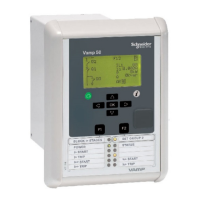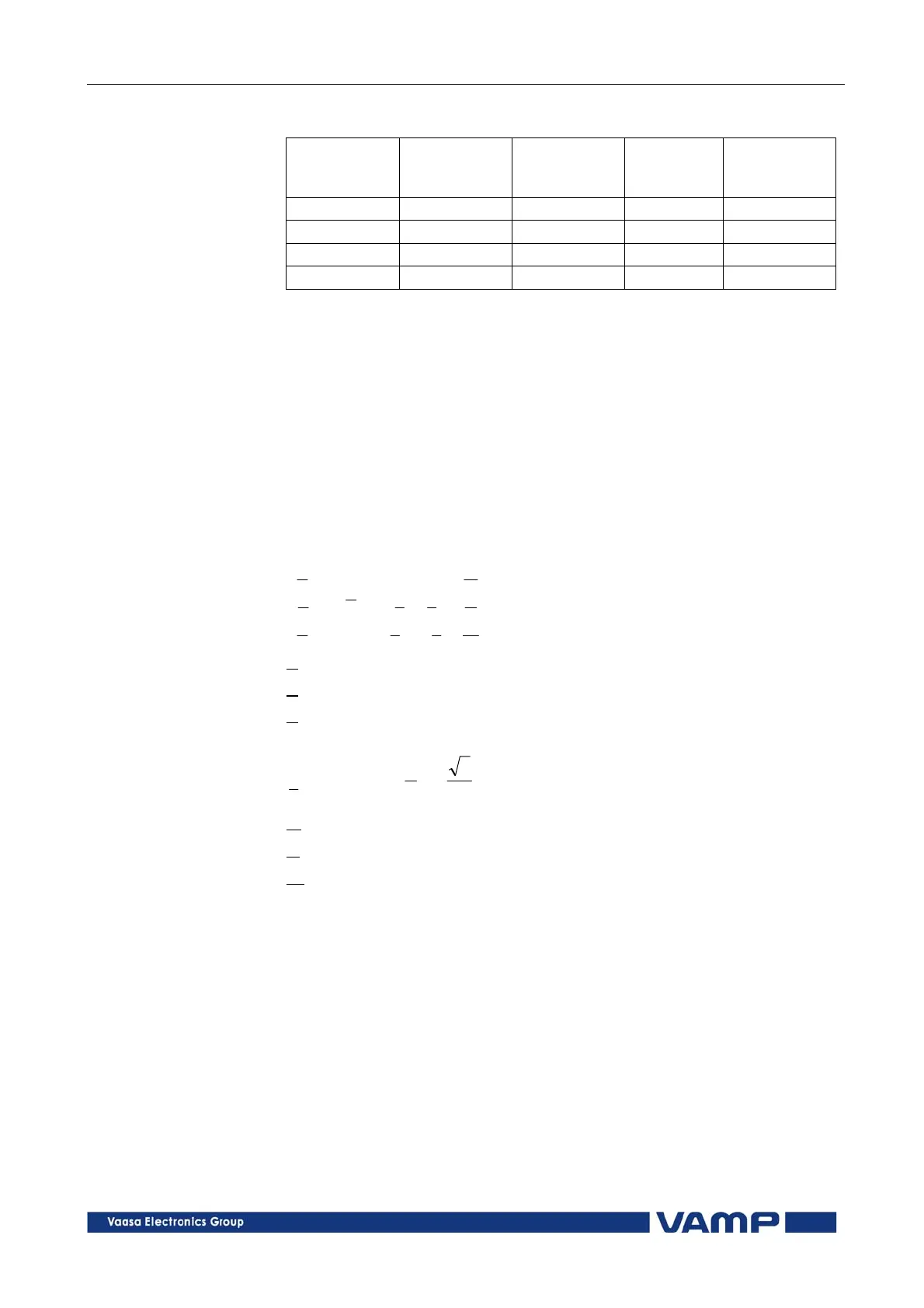Technical description 4 Measurement functions 4.10 Symmetric components
VM50.EN004 VAMP 24h support phone +358 (0)20 753 3264
145
Table 4.9-1 power quadrants
Power
quadrant
Current
related to
voltage
Power
direction
cos
Power factor
PF
+ inductive Lagging Forward + +
+ capacitive Leading Forward +
inductive
Leading Reverse
+
capacitive
Lagging Reverse
4.10. Symmetric components
In a three phase system, the voltage or current phasors may be
divided in symmetric components according C. L. Fortescue
(1918). The symmetric components are:
Positive sequence 1
Negative sequence 2
Zero sequence 0
Symmetric components are calculated according the following
equations:
W
V
U
aa
aa
S
S
S
2
2
2
1
0
1
1
111
3
1
, where
S
0
= zero sequence component
S
1
= positive sequence component
S
2
= negative sequence component
2
3
2
1
1201 ja
, a phasor rotating constant
U
= phasor of phase L1 (phase current)
V
= phasor of phase L2
W
= phasor of phase L3
4.11. Primary, secondary and per unit
scaling
Many measurement values are shown as primary values
although the relay is connected to secondary signals. Some
measurement values are shown as relative values - per unit or
per cent. Almost all pick-up setting values are using relative
scaling. The scaling is done using the given CT, VT in feeder
mode and furthermore motor name plate values in motor mode.
The following scaling equations are useful when doing
secondary testing.

